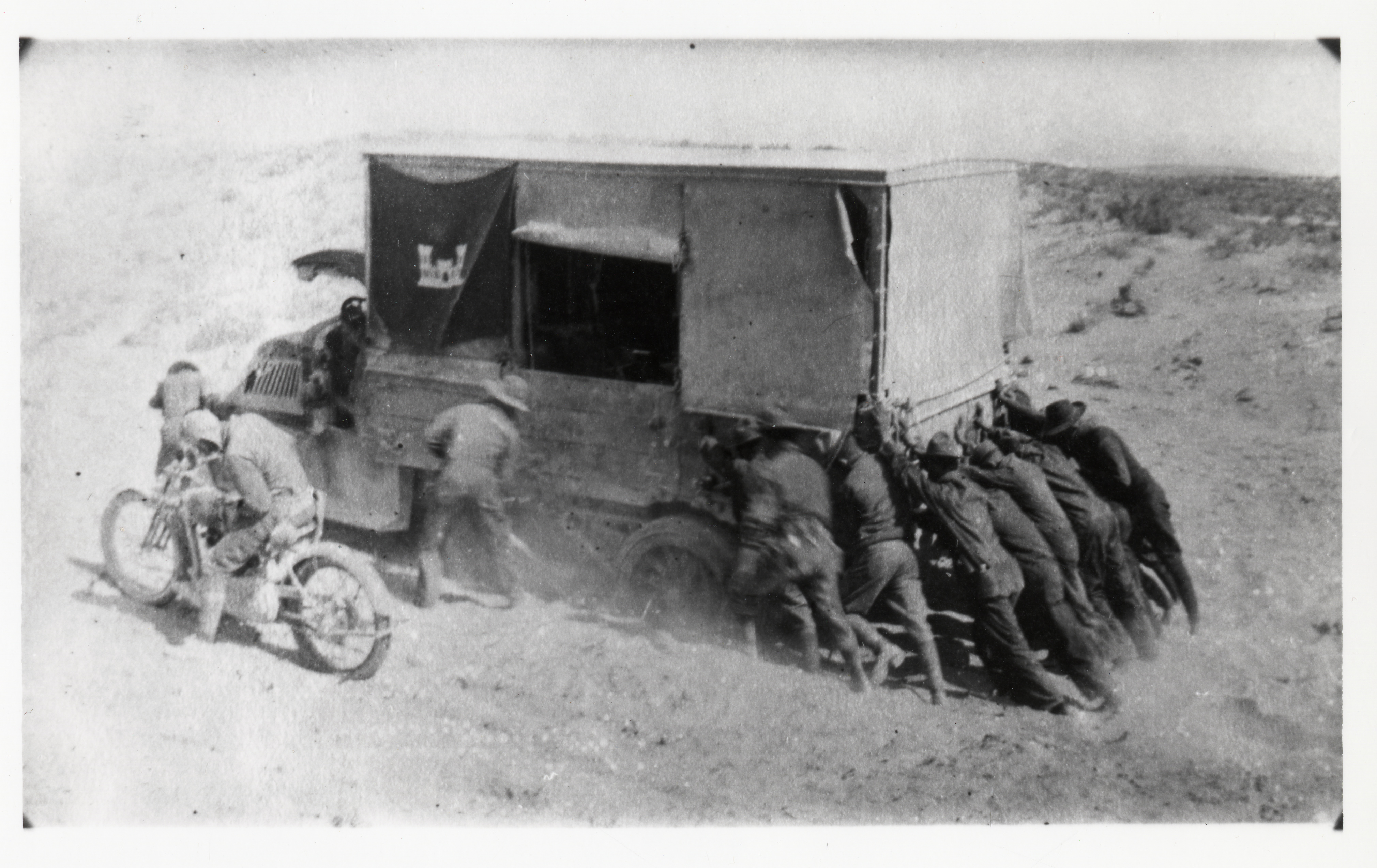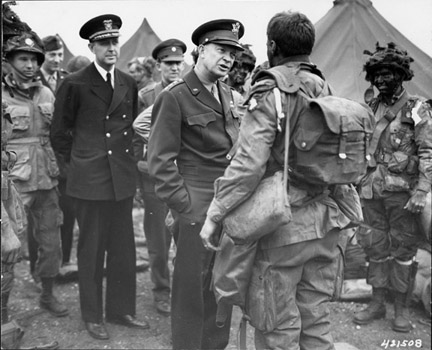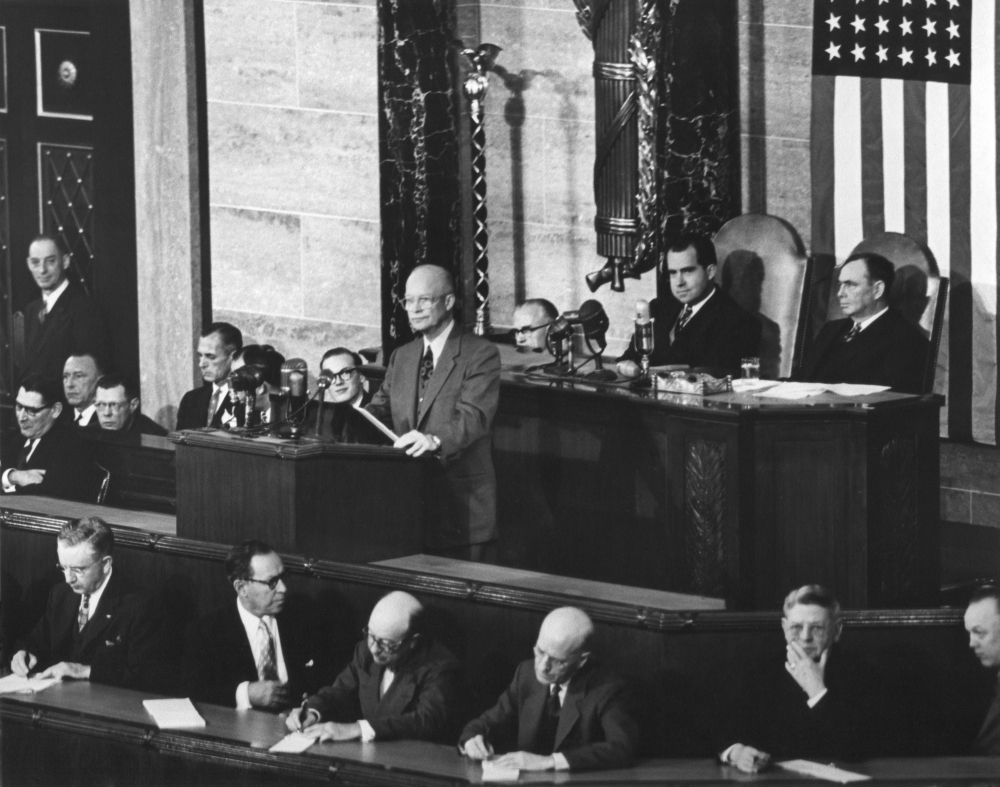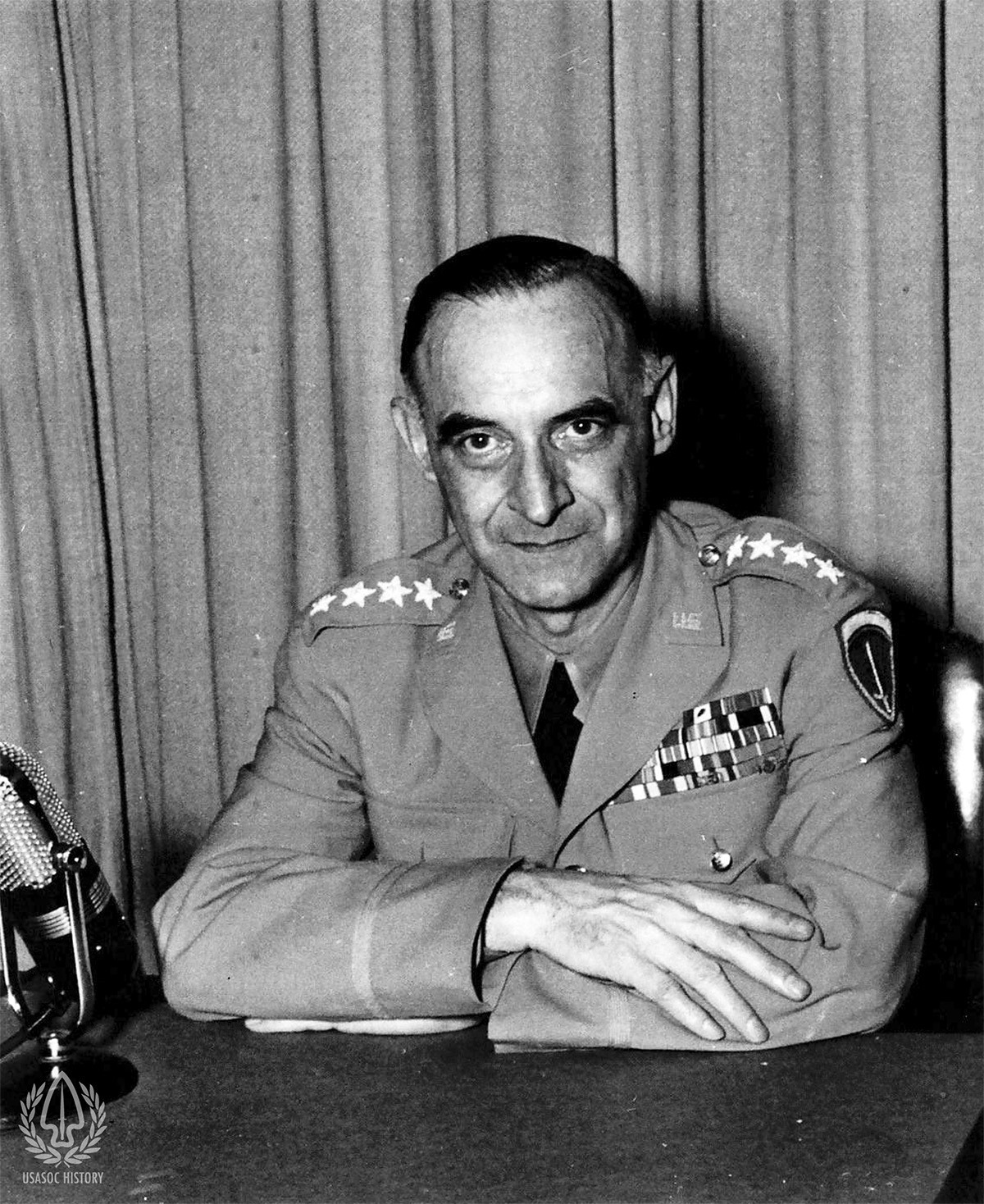History
In 1919, Lieutenant Colonel Dwight D. Eisenhower traveled in a convoy from Washington, D.C. to San Francisco. Faced with quicksand, broken bridges, ditches, and sand drifts, they traveled 3,242 miles in 62 days, averaging 52 miles a day. Today, that distance takes an hour. Eisenhower wrote the experience in his book, At Ease: Stories I Tell to Friends: “The old convoy had started me thinking about good, two-lane highways…”




